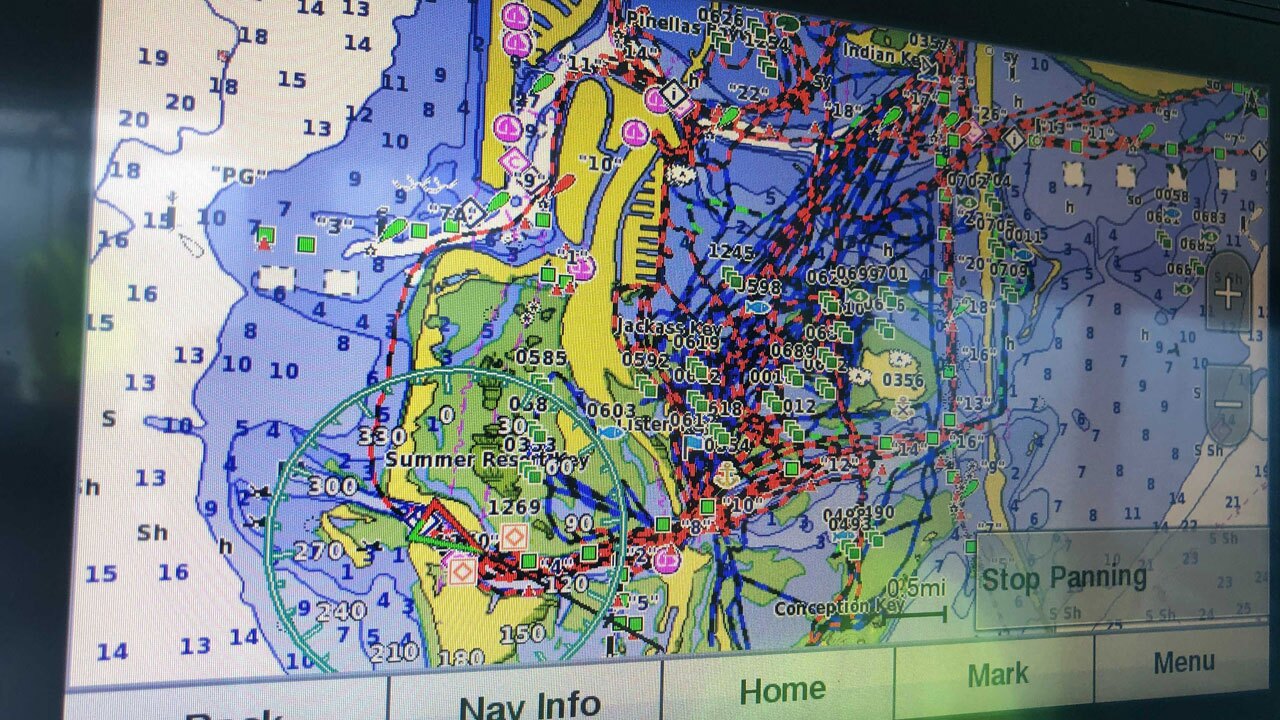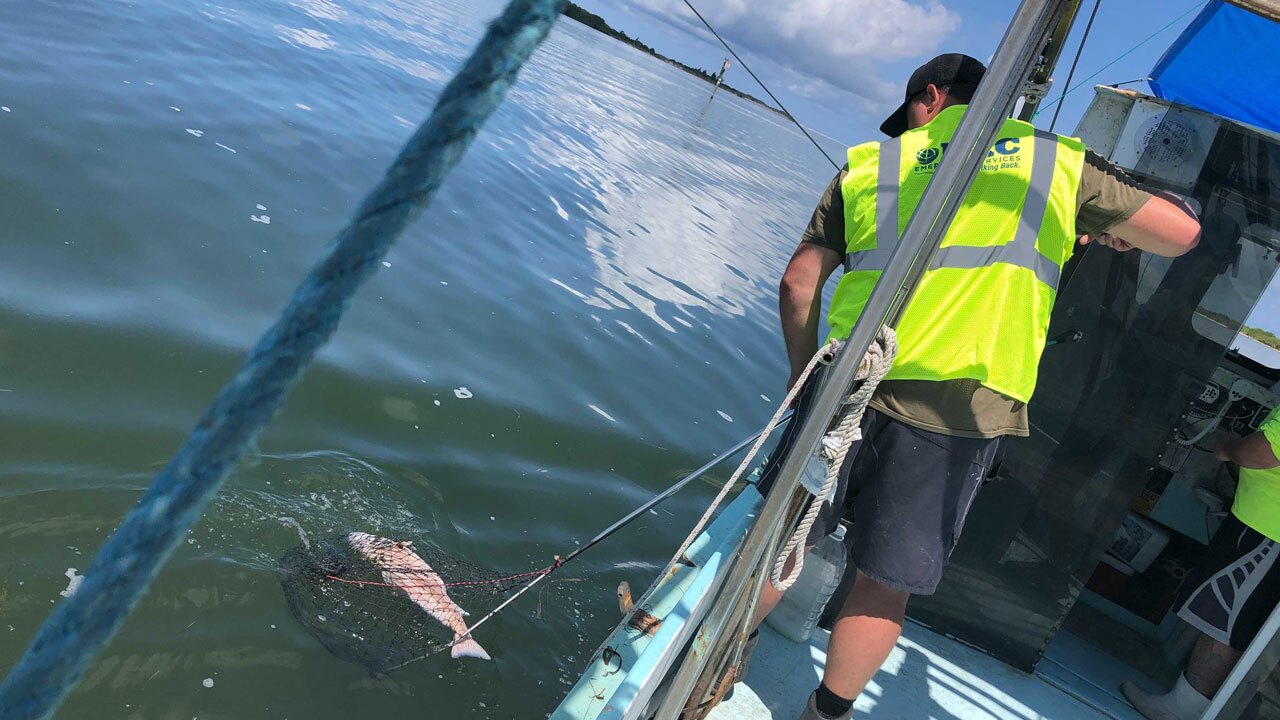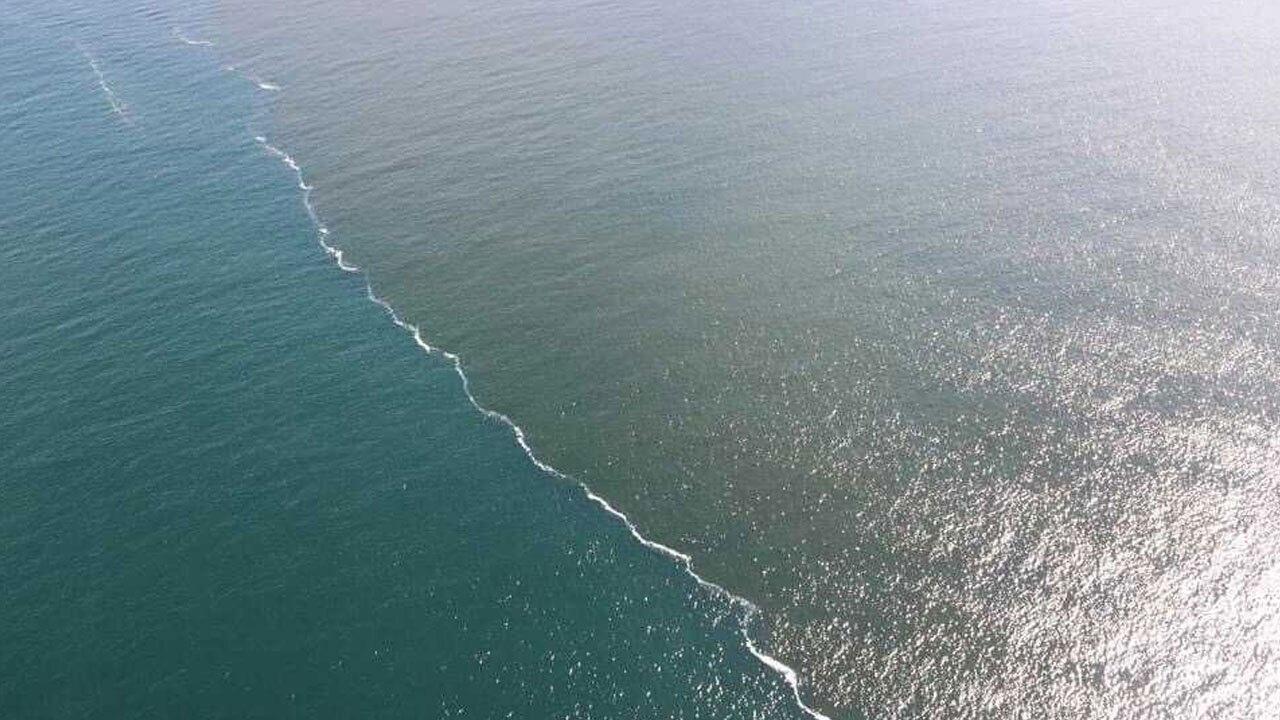PINELLAS COUNTY, Fla. — Red tide cleanup crews in Pinellas County are getting help from above to spot the toxic algae bloom.
Pinellas County is using a helicopter to spot the red tide blooms. Then, they direct crews in boats to the worst locations.

Greg Novak is part of a 40-person crew working for DRC Emergency Services, the company contracted by Pinellas County to help with cleanup. Novak is a third-generation shrimper. When red tide snatched away business, he got to work scooping up dead fish.
“They gave us a chance to keep going, make a living and help clean up at the same time, which it’s really saved us,” Novak said while explaining that the bait shrimp market has tanked during red tide.
Novak is working off a smaller shrimp boat, one of 25 Pinellas County was using Tuesday to collect dead fish before they wash onshore onto beaches, canals and boat ramps.
So far, crews have cleaned up 1,300 tons of red tide debris. That’s the weight of 930 standard-size cars.

Jay Gunter heads up the cleanup efforts for DRC Emergency Services and says winds and tide impact cleanup.
“I think we’re getting ahead,” he explained. “Monday, I was a little skeptical because we got hit pretty good, but we are back ahead of it again today.”
The bay was mostly clear of dead fish Tuesday, but county crews had to add rakes to the beaches South of Indian Shores, where dead fish started washing up.
FWC snapped a photo Tuesday showing the red tide bloom 10 miles off of Pinellas County’s coast.

Pinellas County recently launched a new reporting tool that you can use to alert them to fish kills in areas with thousands of dead marine life. You can find that tool by clicking here.
Gunter says it’s a crucial part of the cleanup response.
“We’ve got all the equipment, but we can’t be everywhere and see everything, so the more they report, the quicker we respond,” he added.
With onshore winds expected to bring more dead fish to our coastline later this week, local leaders say it will take a community effort to stay ahead of the toxic bloom.



